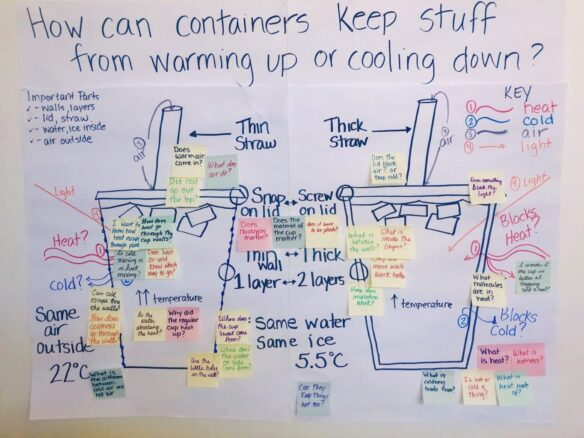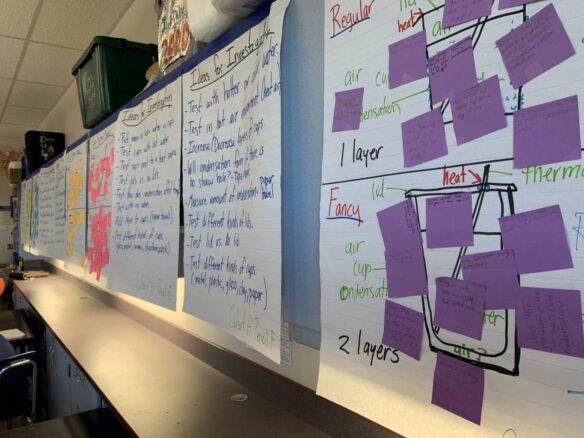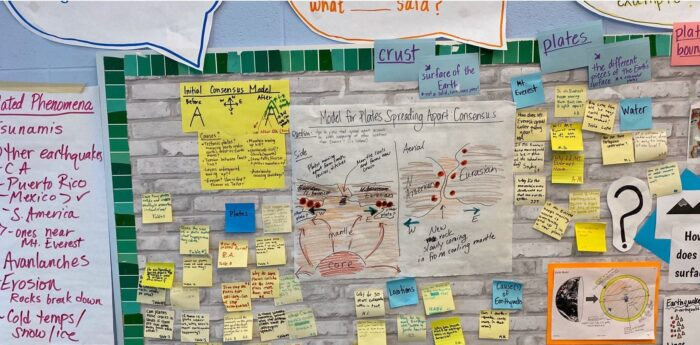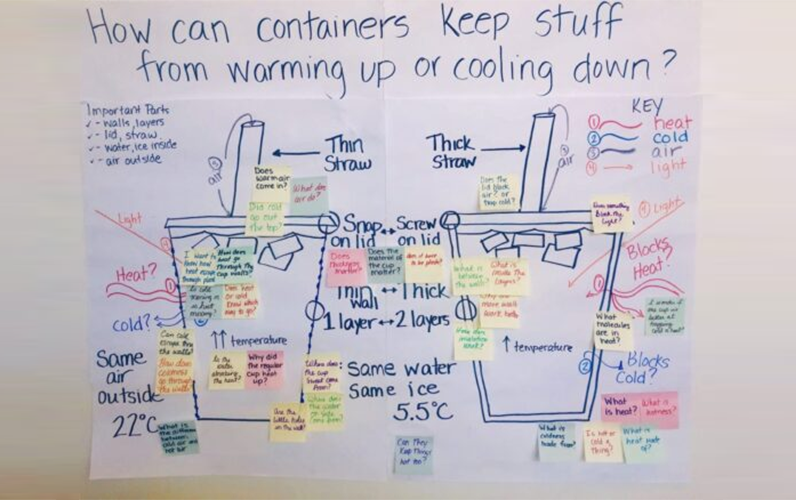The Next Generation Science Standards (NGSS) Storylines include a focus on engaging and ongoing student-centered discussions to develop understanding along the way. One strategy to organize student discussions is called the Discussion Question Board, or DQBs.
Here are some examples of DQBs, courtesy of OpenSciEd:



Discussion Question Boards (DQBs) are a great way to facilitate student-led conversations in the classroom. DQB is a set of questions used in OpenSciEd to generate, track, and revisit student questions that drive the investigation of the anchoring phenomenon and related phenomena.
The following video, from OpenSciEd, does a great job of showing DQBs in action!
Excited to try it? Here are some tips for using DQB with your students:
- Encourage open-ended questions. Open-ended questions encourage students to think critically and to share their own ideas. Avoid questions that can be answered with a simple “yes” or “no.”
- Ask students to vary the types of questions they pose. Some questions should be factual, while others should be conceptual. Some questions should be specific, while others should be general. This will keep the discussion interesting and engaging.
- Post the questions in a visible place. Students need to see the questions so they can refer to them during the discussion. Questions can be posted on the board, projector, or website.
- Give students time to think. Before starting the discussion, give students time to consider their questions and think about how they could relate to others’ questions. This will encourage effective participation in the discussion.
- Monitor the discussion. As the discussion progresses, monitor the students’ participation. Make sure everyone has a chance to speak and the conversation is on track.
- Choose one or more students to summarize the discussion. At the end, students should be aware of the main points covered. This will allow students to consolidate their learning and see how the discussion has helped them reach their goals.
Want to learn more about how DQBs fit into Storylines and the NGSS? Check out course 5321: Questions and Connections with NGSS Science Storylines to revolutionize your science instruction!
About the Author

Betsy Butler (she/her) is a Professional Learning Specialist at Teaching Channel. She holds a B.A. in English, a Master’s in Education, and has been teaching since 1992. Betsy uses her three decades of teaching experience to write and revise our courses while selecting the perfect accompanying texts. Her specialty areas include ELA, special education topics, behavior management, and mental health.
Fun Fact: Betsy’s daily conquest is solving the New York Times crossword puzzle!






